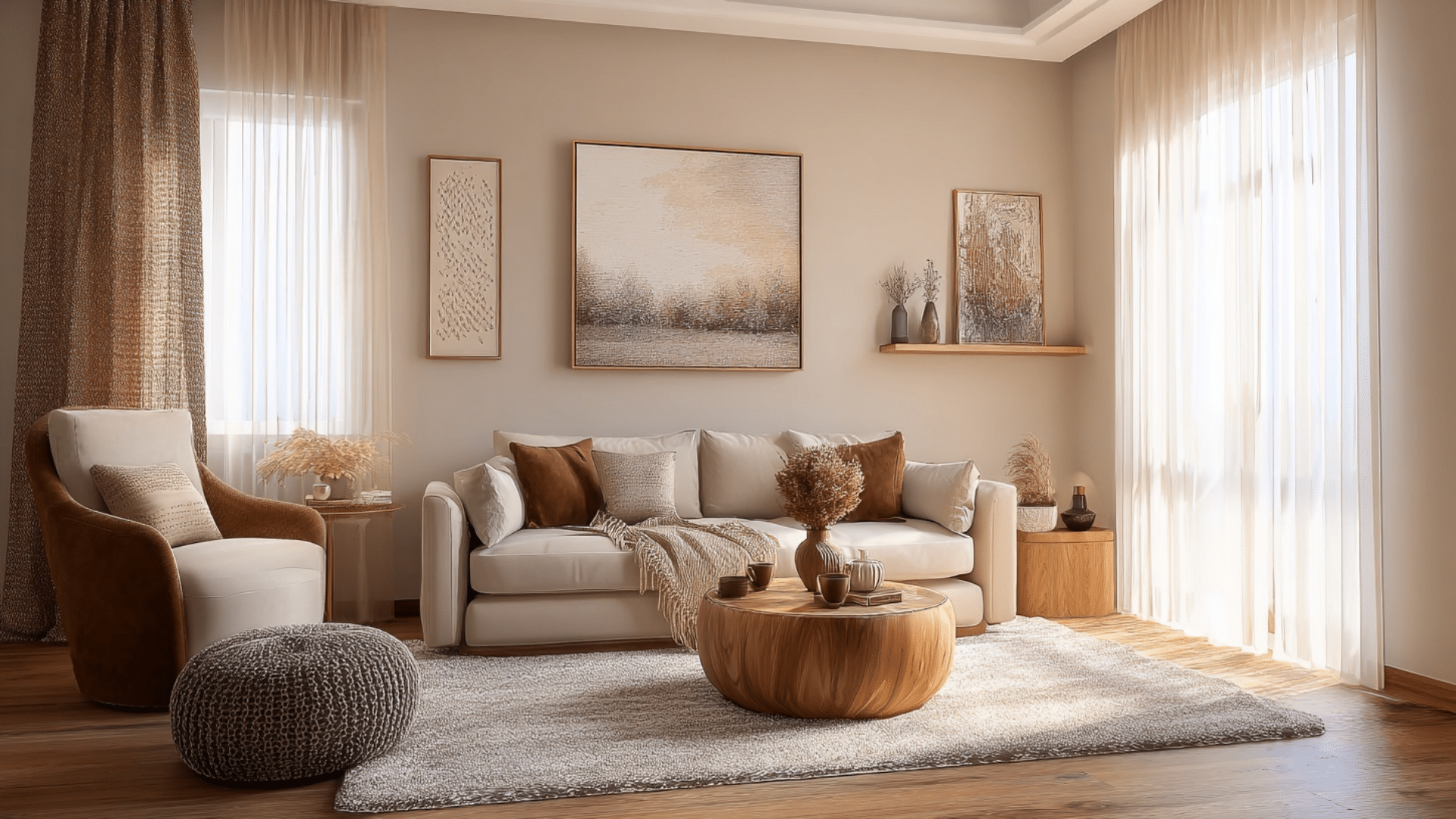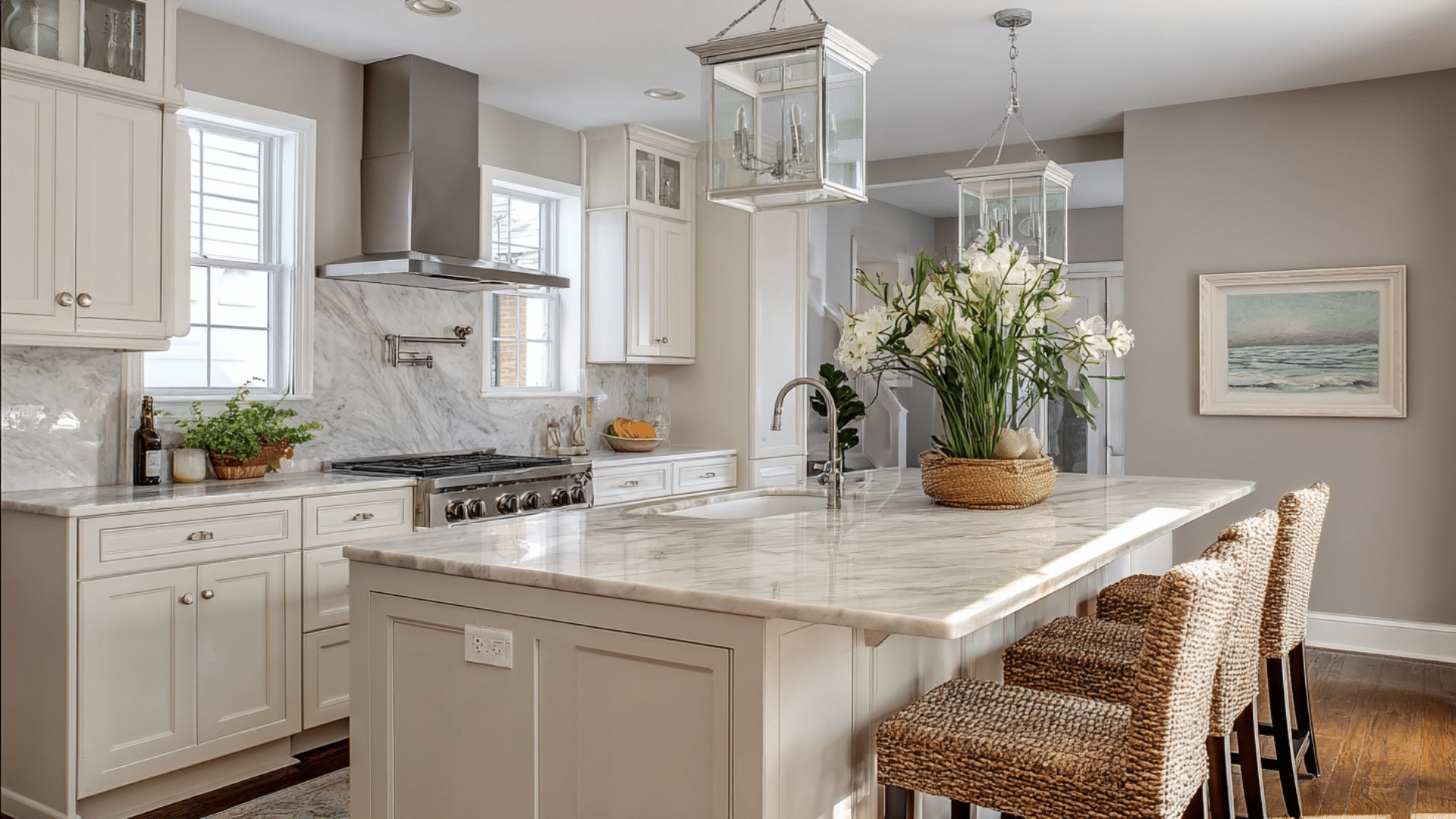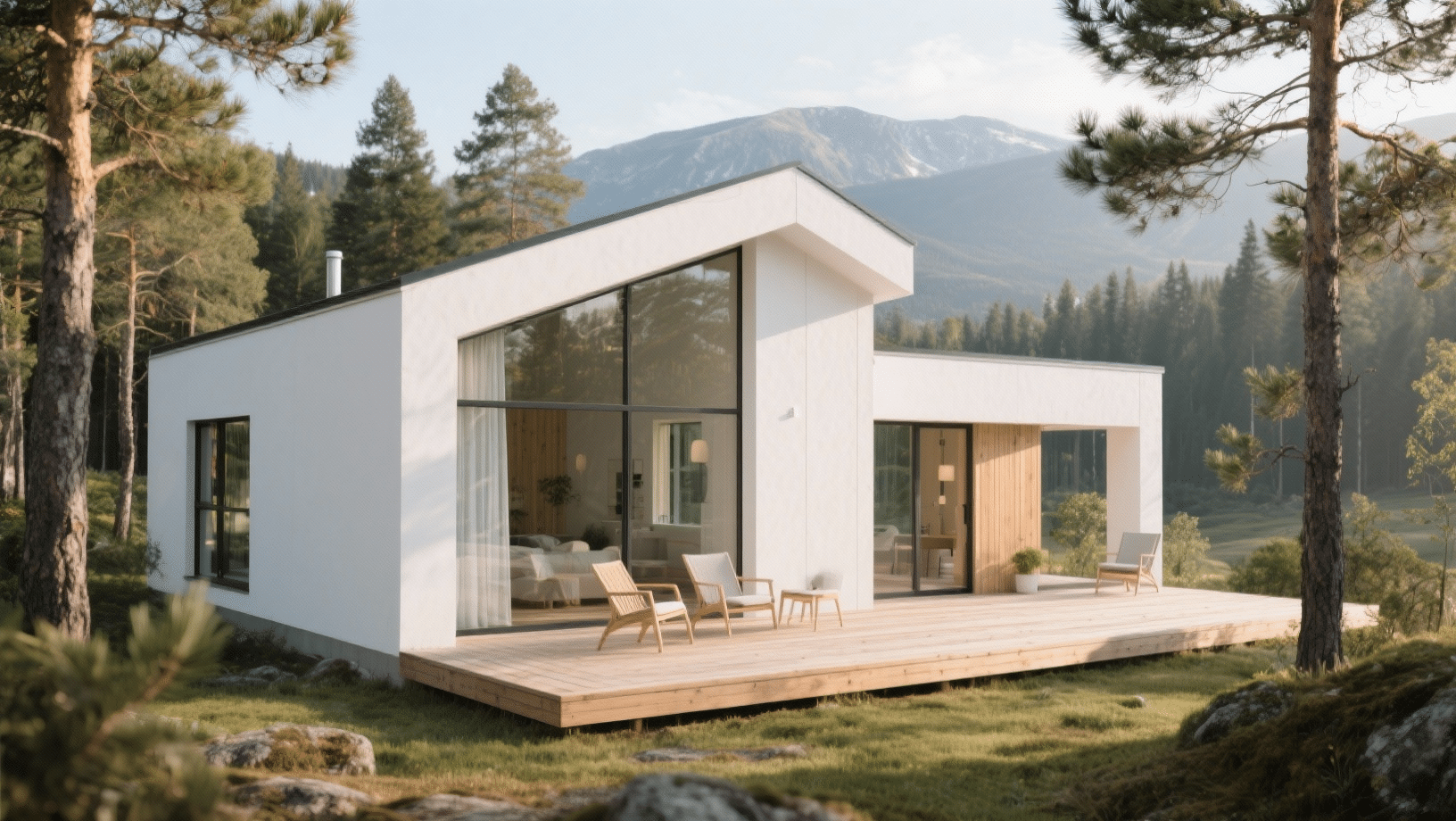What is Harmony in Interior Design?
Harmony in interior design is when all elements in a room work together smoothly.
Think of it like a good recipe; each ingredient supports the others rather than competing for attention.
Colors complement each other, furniture pieces feel connected, and textures create a unified look throughout the space.
Nothing jumps out as wrong or out of place. Instead, everything flows together naturally. This creates spaces where people feel comfortable and relaxed.
Harmony doesn’t mean everything must match perfectly. Rather, it means finding common threads that tie different elements together into one.
The Core Principles of Harmony
The following principles of Harmony help in every design decision, from paint colors to furniture choices. They work together to create spaces that feel balanced.
1. Color Balance
Colors should complement rather than compete with each other. Choose a main color palette and stick to it throughout the room.
Use the 60-30-10 rule: sixty percent dominant color, thirty percent secondary, ten percent accent.
2. Visual Weight Distribution
Every object has visual weight based on size, color, and texture. Heavy pieces should be balanced across the room.
Dark furniture needs lighter elements nearby to avoid making the space feel too heavy.
3. Repetition and Rhythm
Repeat colors, shapes, or textures throughout the room to create flow.
This might mean matching pillow colors to artwork or repeating curved lines in different furniture pieces for a consistent visual rhythm.
4. Proportion and Scale
Furniture size should match the room dimensions appropriately. Large rooms need substantial pieces while small spaces require lighter furniture.
Everything should feel sized correctly for its surroundings.
5. Unity Through Variety
You can mix different elements while maintaining connection points. Vary textures, heights, and shapes, but keep common colors or materials.
This creates interest without losing the united feel that defines true harmony.
Steps to Incorporate Harmony in Your Home
Putting harmony in interior design into practice doesn’t have to feel complicated. These simple steps take you through the process systematically.
Each step builds upon the previous one to create beautiful and balanced spaces.
Step 1: Begin by Choosing a Color Palette
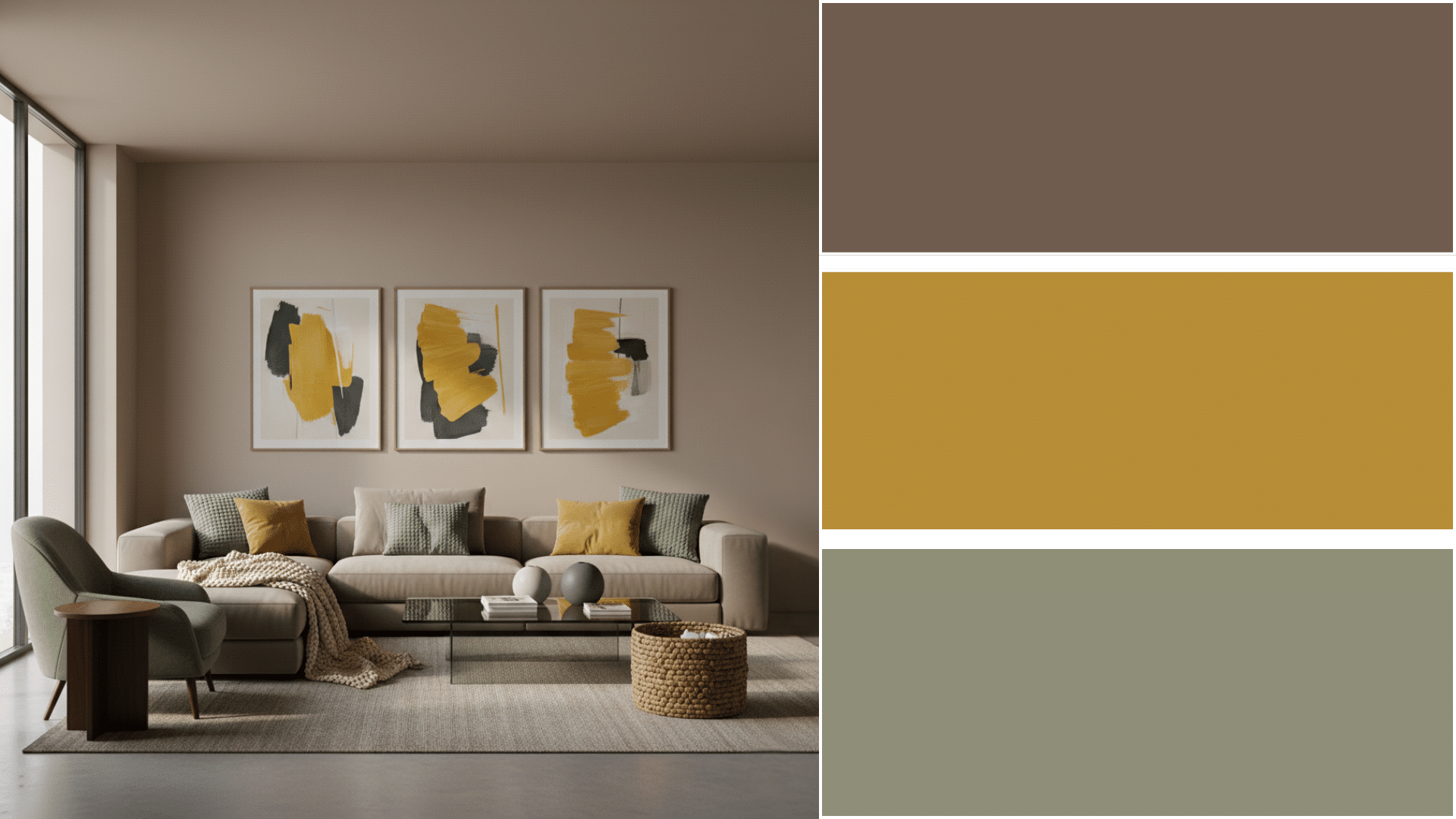
Start with three to five colors that work well together. Pick one dominant color for walls and large furniture pieces. Add secondary colors through accessories like pillows and artwork.
Keep accent colors minimal but impactful. Test colors in different lighting conditions before making final decisions. This foundation ensures every other design choice supports the overall color story.
Step 2: Add Different Textures
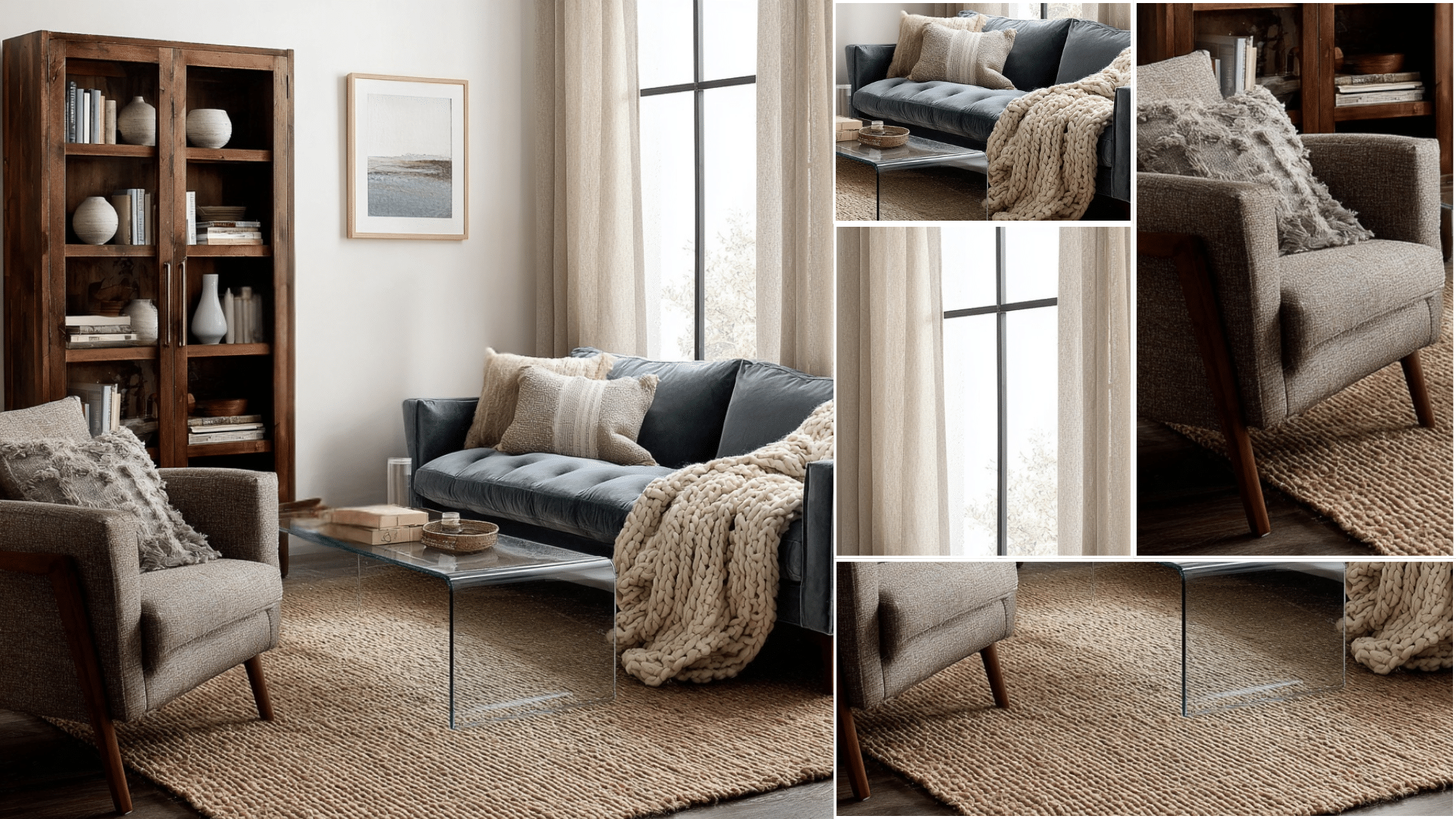
You can layer various textures to add depth without disrupting visual flow. Mix smooth surfaces like glass tables with rough elements like woven baskets.
Combine soft fabrics, such as velvet cushions, with harder materials like wooden furniture.
Different textures catch light differently, creating subtle interest throughout the room.
Step 3: Experiment with Shapes
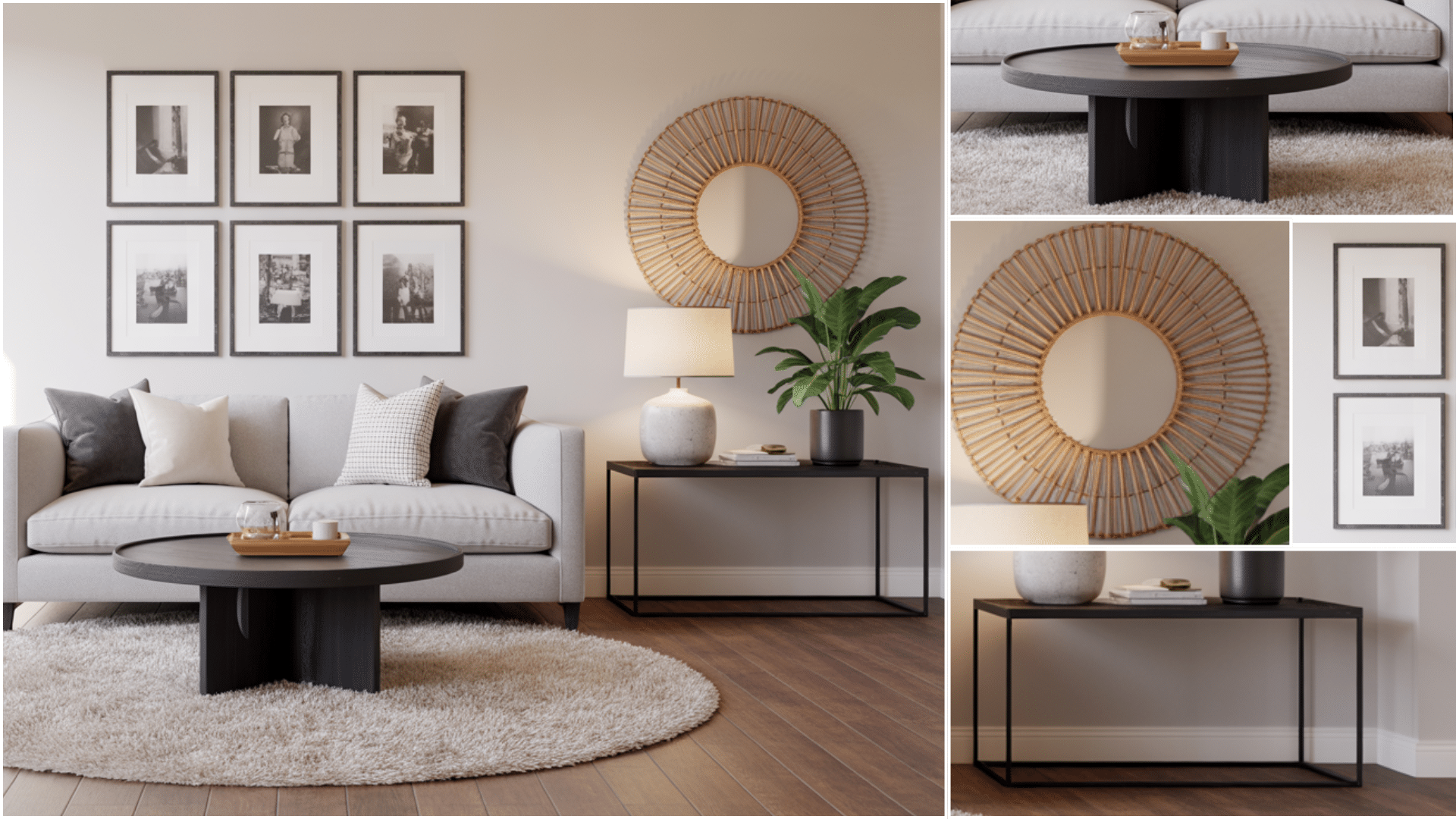
Vary geometric forms while maintaining some consistency. If most furniture has straight lines, add curved elements like round mirrors or oval coffee tables. Mix rectangular artwork with circular decorative objects.
However, don’t go overboard; too many different shapes create chaos rather than harmony.
Choose two or three shape families and repeat them throughout the space strategically.
Step 4: Introduce an Element of Surprise
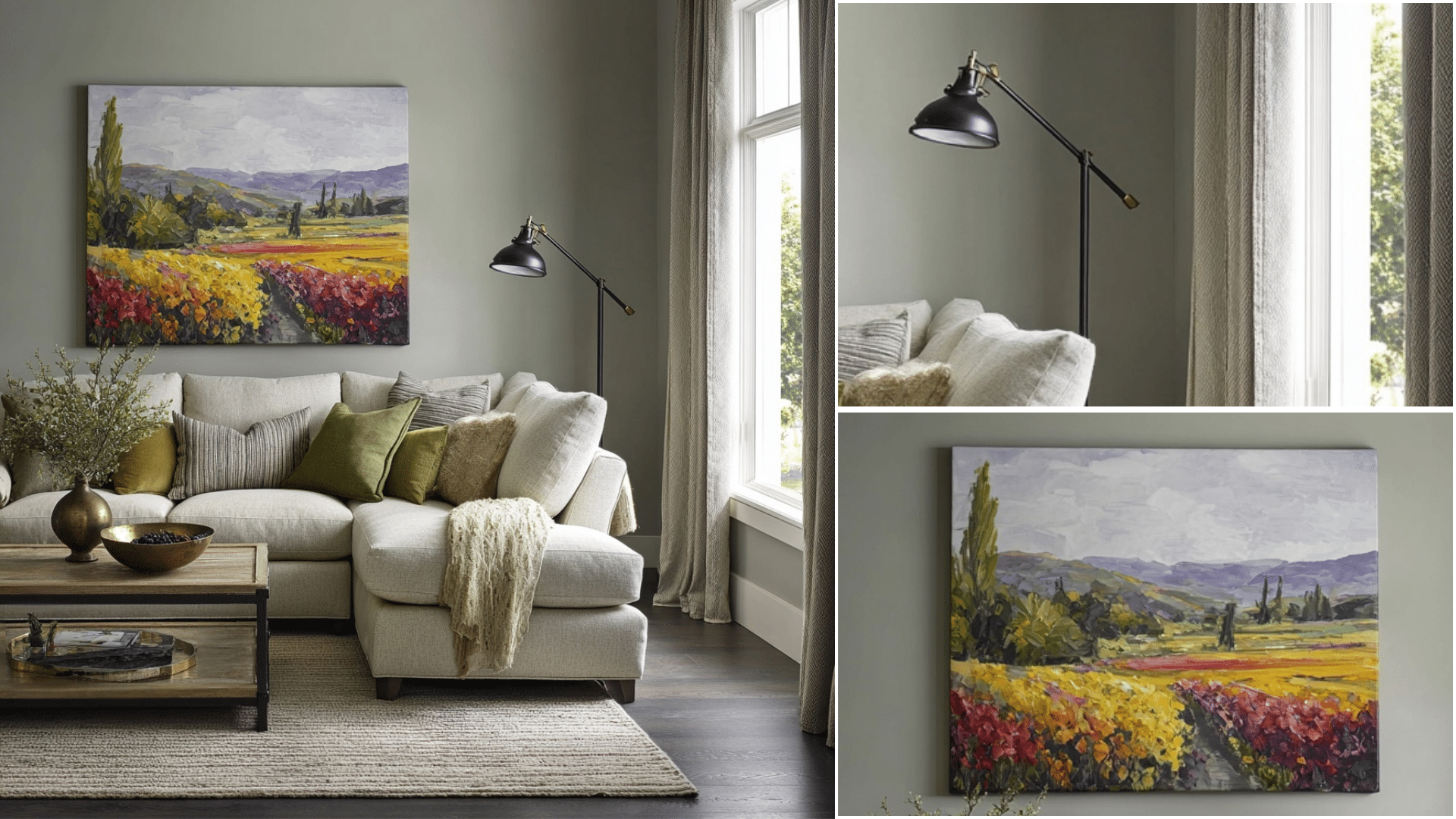
Add one unexpected piece that still fits the overall scheme. This might be an unusual light fixture, an artwork, or an interesting sculpture.
The surprise element should complement existing colors and textures while bringing personality to the space. Keep it proportionate to the room size.
This prevents spaces from feeling too predictable while maintaining the harmonious foundation already established.
Step 5: Take a Moment to Review and Refine
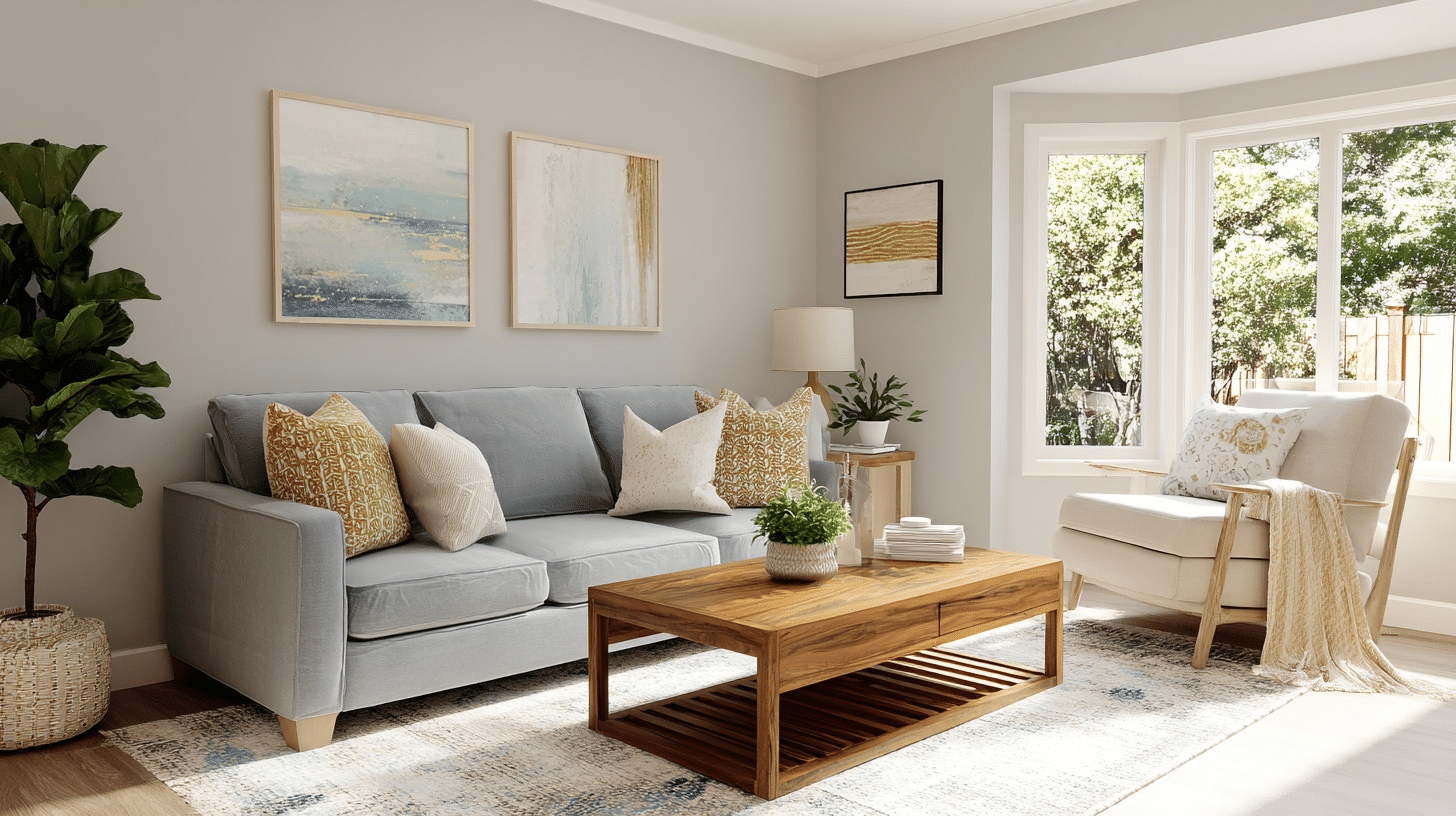
Step back and assess the entire room objectively. Look for areas that feel unbalanced or disconnected. Move items around until everything feels right. Sometimes small adjustments make huge differences in overall harmony.
Ask friends or family members for honest opinions. Fresh eyes often spot issues that become invisible over time. Make final tweaks until the space feels completely unified and comfortable.
Other Principles of Interior Design
There are other principles other than harmony in interior design that help to plan space successfully. These fundamental concepts work together to create rooms that feel both functional and beautiful.
Balance
Balance ensures visual stability by distributing elements evenly throughout a space. Symmetrical balance places identical items on both sides of a central point.
Asymmetrical balance uses different objects with equal visual weight. Radial balance arranges elements around a central point, creating circular harmony that draws the eye inward naturally.
Emphasis
Every room needs a point that immediately captures attention when people enter. This might be a statement wall, a large artwork, or a striking furniture piece.
Emphasis prevents spaces from feeling boring or directionless. Other elements should support rather than compete with the main focus for maximum visual impact.
Rhythm
Rhythm creates movement and flow through the repetition of colors, shapes, or patterns. Regular rhythm repeats identical elements at consistent intervals. Progressive rhythm gradually changes elements in size or color.
This principle guides the eye smoothly throughout the entire room space.
Proportion
Proportion relates to how objects size up against each other and the room itself. Furniture should fit the space appropriately.
Golden ratio proportions often feel most pleasing to the human eye. Proper proportion creates comfort and visual satisfaction naturally.
Scale
Scale specifically addresses size relationships between objects and human bodies. Furniture height should accommodate average human proportions comfortably.
Coffee tables work best at sofa seat height. Artwork should relate properly to the furniture size beneath it. The correct scale ensures spaces feel comfortable and functional for everyday living and daily use.
Unity
Unity ties all elements together into one through shared characteristics. Common colors, materials, or styles create a connection between different pieces.
Rooms should feel like they belong in the same home. Unity doesn’t require everything to match perfectly; just share some connecting visual threads that bind the space.
Common Mistakes That Disrupt Harmony
The following mistakes happen frequently but are easy to fix once identified.
- Using too many colors at once: Stick to your chosen palette instead of adding random colors that don’t belong together.
- Ignoring scale and proportion: Oversized furniture in small rooms or tiny accessories in large spaces throws off visual balance completely.
- Placing all furniture against the walls: This creates dead space in the room centers and prevents natural conversation flow between people.
- Mixing too many patterns: Combine only two or three patterns maximum, ensuring they share common colors for cohesion.
- Choosing items without connection: Random purchases that don’t relate to existing pieces break the unified look harmony requires.
- Overcrowding spaces with accessories: Too many decorative objects compete for attention rather than working together as a cohesive group.
- Ignoring traffic flow: Furniture placement that blocks natural walking paths makes rooms feel awkward and uncomfortable to use.
Wrapping It Up
The principles and steps outlined here provide a roadmap, but remember that creating balance is more art than science.
Trust your instincts while applying harmony in interior design in your house.
What feels right in one person’s space might not work in another’s, and that’s perfectly normal.
The goal isn’t perfection, it’s creating spaces where life unfolds naturally and beautifully.

